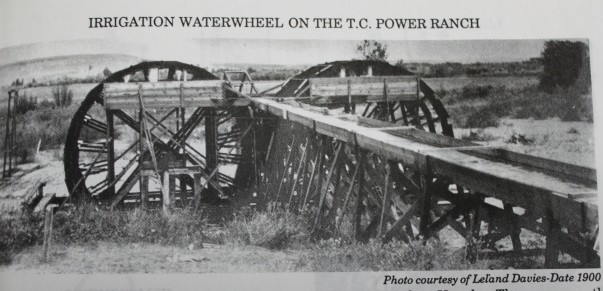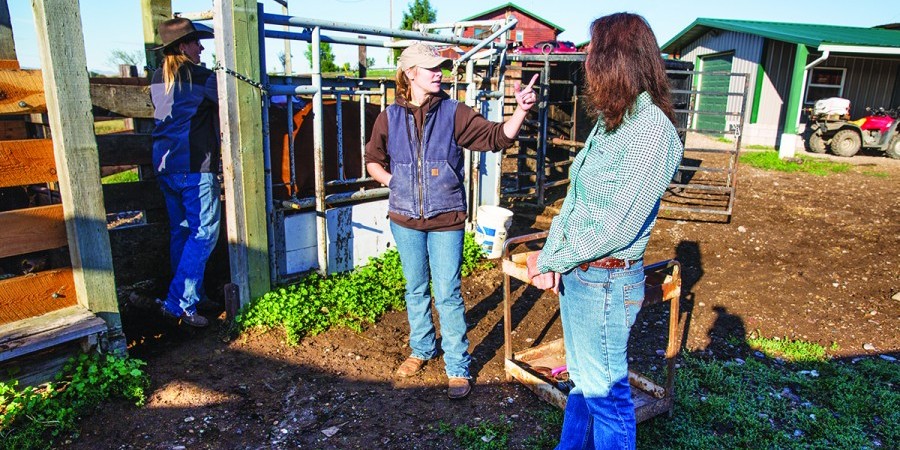Written by Suzanne Waring

These waterwheels on the Sun River were offset and a flume channeled water to ditches. Photo taken from a history of the Sun River area and found at the Great Falls Genealogy Society, Montana Room of the Great Falls Public Library.
North Central Montana farmers began using water wheels as soon as they took up homesteads along the Teton, Marias, Sun, and Missouri Rivers before the turn of the 20th Century. Water wheels had been used in the Middle East, Asia, and Europe, especially by the Dutch, for eons, and the concept had migrated to the United States. It was only natural that those farming the bottom lands along Montana rivers on the eastern front of the Rocky Mountains would attempt to use water wheels for irrigation in a region where it rained only around fifteen inches a year.
The two major types of water wheels used in the United States were “overshot” and “undershot” wheels. Overshot wheels were built mainly for the purposes of milling grain and sawing wood and were powered with water that came from dammed mill ponds and entered from the top of the wheel forcing it downward into rotation.


